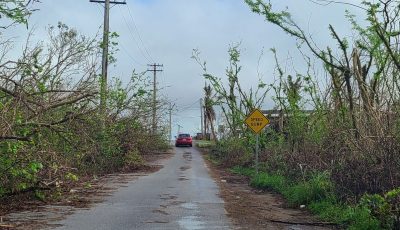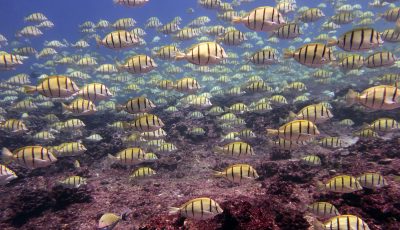FROM MICROBES TO MEGAFAUNA
Coral reef ecosystem in the Marianas

Photo shows a colony of Acropora globiceps, a coral species protected by the Endangered Species Act. At least five of these colonies were found in a single dive by scientists participating in the NOAA research cruise. This news is particularly pertinent given the ongoing EIS activities for this island due to military proposals to use it for expanded training activities. (NOAA FISHERIES/DAVID BURDICK)
The research vessel Hi’ialakai of the National Oceanic and Atmospheric Administration will arrive on Saipan this week. On Thursday, June 22, the Asia-Pacific Academy of Science, Education and Environmental Management will host a public presentation by shipboard scientists at the American Memorial Park auditorium, starting at 6pm. Everyone is invited and, as at all APASEEM gatherings, questions from the audience are encouraged.
NOAA’s Pacific Islands Fisheries Science Center’s Coral Reef Ecosystem Program collects data on fish, coral, invertebrate, and microbial communities, as well as data on the physical structure and chemical properties of the region’s reef ecosystems. The program’s goal is to provide sound scientific data for the management and conservation of coral reefs.
In addition to its reef research, the cruise also assisted NOAA’s Cetacean Research Program through the retrieval and deployment of high-frequency acoustic recording packages, or HARPs, in the Pacific Remote Islands and around Tinian and Saipan. These devices are deployed to continually collect data on whale and dolphin vocalizations.
The research cruise is a major team effort. The ship’s scientific crew hails from the University of Hawaii Manoa, Scripps Oceanographic Institute (University of California San Diego), San Diego State University, University of Guam, the CNMI Bureau of Environmental and Coastal Quality as well as NOAA.
Dr. Kelvin Gorospe, a reef fish ecologist based in Honolulu, is chief scientist.



























